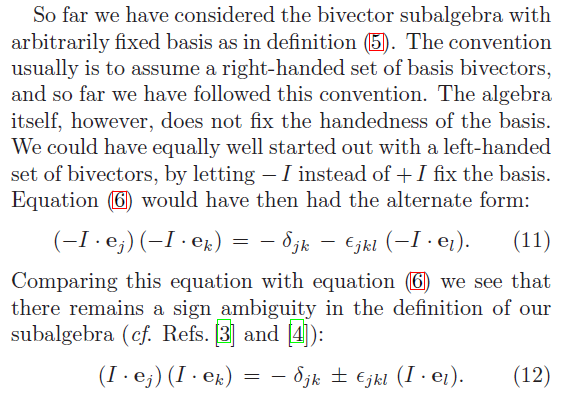The right hand sides of the two equations here
Joy Christian wrote:
are Christian's "fair coin choices of orientation", one for lambda = +1 and the other for lambda = -1. So please no more BS about this not being essential to Christian's program as in
FrediFizzx wrote:Yeah, and I already told Lockyer to forget about (-I.a)(-I.b) a bunch of times since he can't figure it out and it bothers him so much. It is not really needed anyways but the poor guy is in so much denial from his math error being exposed, he has nothing left to harp about. And he can't even see that his math error is the equivalent of saying that a left handed screw is the same as a right handed screw. Completely absurd.
I have it figured out Diether. Summing these on an equal chance basis is exactly how Christian tried to demonstrate the -cos() function. Your tying the algebra to physical screws brought me to the one right handed screw plus one left handed screw is the same as no screws. It follows directly from your confusion.
Joy Christian wrote:I am still shaking my head thinking about the colossal stupidity of Lockyer's "argument" above:
Rick Lockyer wrote:The second equation on the left is equal to the first equation on the left, because the two minus signs on the I terms cancel each other out. The sign error is clearly presented by Christian by the fact the two right handed sides are not equal.
He is claiming that since LHS's of the following two equations are the same but RHS's are not, all the standard textbooks on classical mechanics have a "sign error."


or

where

are the generators of angular momenta. [snipped childish emoticons]
Call the first J set f_ and the second e_ and I will have no issue with these, clearly since they demonstrate portions of the f (left handed) and e (right handed) isomorphic representations of the bivector basis subalgebra of geometric algebra you chose.
You make them both J to provide the illusion they can be added, as you do in adding fair coin choices between left and right handed orientations. So why not, lets add both just for s*** and giggles, and put a happy face on it after dividing by 2. What have we proved? Simply that the product of ANY two unit bivectors is either 0 or -1, since the non-scalar portion drops out due to the opposite signs within the two added equations. Not sure about you two, but the rest of us are going to have issues with this conclusion.
I call one basis e and the other f, and ALWAYS include the basis elements in the math for good reason. It clearly indicates which coefficients can be directly added and which can't. The coefficients on like enumerated basis elements for the two orientations are of opposite sign, the problem is the attached basis element is not the same, and when made the same an additional negation is required. This negation is precisely the minus sign in (-I.a) as compared to (I.a), which Christian correctly assigns as his left and right orientations respectively. Only an idiot would conclude it is an extra negation.
As for Christian's "the colossal stupidity of Lockyer's "argument" above:", just what is it you do not understand about the two minus signs on the left hand side of the second equation cancel, making it the same as the left hand side of the first equation in this:
Joy Christian wrote:
No obfuscation, BS, just YOUR math equations. The rule of multiplication by a real number (-1 here) is going to prevent you from doing this. Your sign error is quite real, the proof is quite trivial, making your insistence there is none quite amazing.
Michel Fodje, Christian keeps putting you in his club of stupid people by repeating your slight towards me. Now I can give you the benefit of the doubt that you did not look closely enough at things, and accept your apology. But if you still think I am the one that made the math error, you got some 'splaining to do Lucy. Man up, something Christian and Diether et al don't seem able to do. Please do tell us how (-1)(-1) does not equal +1.
are the generators of angular momenta.



